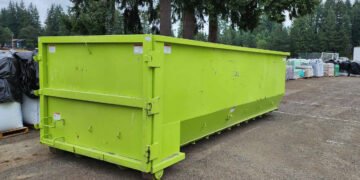Have you been hiding your teeth when you smile because your “pearly whites” aren’t as white as you’d like them to be? While even clean natural teeth are slightly off-white, sometimes they can become stained or discolored over time, even if you’re following good dental hygiene practices.
So how can you whiten them? What’s the best way to whiten teeth without causing any damage?
We’re here to talk all about what to do, what not to do, and how to maintain your pearly white smile once you have it. Read on to learn more.
At-Home Teeth Whitening Kits
Your first option, and often the first option that dentists will recommend if you only have a small amount of discoloration, is an at-home whitening kit. At-home whitening kits are affordable, safe, and easy to use.
You can buy at-home teeth whitening kits from most grocery stores and pharmacies, but these are best for maintaining white teeth or whitening teeth that are already almost white. They’re often more difficult to use and less effective than whitening kits that you can get from your dentist.
Your dentist can give you whitening trays and a special gel for you to take home and use. They’ll explain how to use the gel and the trays to get the results that you’re looking for.
Whitening Toothpaste
Many people who don’t want to go the professional route will try to use whitening toothpaste before they visit their dentists. There are pros and cons to whitening toothpaste, but again, for small amounts of discoloration, the toothpaste can be effective.
Whitening toothpaste is more abrasive than normal toothpaste. It also contains hydrogen peroxide. This allows it to whiten your teeth more effectively than other types of toothpaste.
With this in mind, make sure that you don’t use it too often. It can cause sensitive teeth (or exacerbate pre-existing sensitivity) and weaken your enamel over time. This may cause future discoloration that’s harder to get rid of.
Baking Soda and Peroxide
Baking soda and peroxide is a common DIY method of teeth whitening. You make a paste with a small amount of baking soda and enough peroxide to make the solution almost liquid.
Use this solution to gently brush your teeth. You can leave it on your teeth for a few minutes while it does its work. This is one of the cheapest ways to whiten your teeth, but again, you have to be careful not to harm your enamel.
In-Office Professional Teeth Whitening
This is the best option for anyone who has significant discoloration. In-office teeth whitening at a dental office like The Dental Team is going to be the most effective way to whiten teeth and get rid of stubborn stains.
When you go this route, the dentist will use a retractor to expose your teeth. They’ll then use a gel to protect your gums so that the teeth-whitening solution doesn’t harm them.
They’ll apply a whitening gel to your teeth several times to get the intended results. They may also use a bright light to “activate” the gel. Keep in mind that it may take several sessions for your teeth to be as white as possible, but you will see results right away.
The teeth whitening process is quick and easy and your dentist will tell you how often you should do it based on the health and color of your teeth.
What Doesn’t Work?
So with this in mind, what shouldn’t you do when you’re trying to whiten your teeth? What doesn’t work? What might work, but will also cause damage?
These are a few things that you should avoid when you’re trying to whiten your smile.
Oil Pulling
There’s nothing wrong with oil pulling per se, but it won’t be effective for whitening your teeth.
When you do oil pulling, you take an oil of your choice and use it like you’d use mouthwash. Coconut oil is a popular option due to its taste and availability. This is an ancient method of cleaning teeth.
While oil pulling may remove debris from your teeth, it’s unlikely that it can do anything to whiten them. It may stop stains from forming if you’re consistent with it, but pre-existing stains will still be there as oil has no stain-removing properties.
On top of this, if you don’t already oil pull, you likely won’t enjoy the process. It can leave your mouth feeling greasy even after you brush your teeth and spitting oil down the drain may cause blockages (especially coconut oil which hardens at cool temperatures).
In other words: if you already oil pull, it won’t harm your teeth and you can continue doing it. Just don’t expect whitening effects.
Lemon Juice or Vinegar
Lemon juice (or vinegar) is a popular “bleaching” method for teeth and hair, but is it really a good idea?
Using acidic liquids on your teeth may whiten them a bit, but it comes at the cost of your enamel. Your enamel is the hard outer surface of your teeth. It helps prevent tooth decay and cavities.
Acid, over time, will soften and wear away at your enamel. Even drinking acidic drinks causes a small amount of harm (which is why you shouldn’t brush right after drinking them. You don’t want to brush softened enamel).
So will these things whiten your teeth? It’s possible, but it isn’t worth the risk.
Over-Using At-Home Teeth Whitening Options
We’ve discussed how hydrogen peroxide and baking soda can whiten your teeth, as well as how you can whiten teeth with whitening toothpaste. While these options are both valid, they should be used in moderation. They can also harm your enamel.
For the hydrogen peroxide and baking soda paste, we recommend not doing it more than once per week and don’t go beyond four weeks at a time. The abrasiveness of baking soda may cause sensitivity.
If you feel like the solution is harming your gums, discontinue use or use less baking soda to see if it makes a difference.
Even using whitening toothpaste can be problematic over time. It’s best to avoid using it for more than a month. Keep it in your medicine cabinet alongside your normal toothpaste and only use it at night instead of during all of your brushing sessions.
Keeping Teeth White
Whether you go to professional teeth-whitening sessions or you choose at-home whitening methods, they don’t prevent your teeth from discoloring again later on.
You have to put time and effort into keeping your teeth pearly white between sessions. It’s normal for a small amount of discoloration to happen, but any excess discoloration is avoidable.
First, if you’re a smoker, stop now. Tobacco can and will discolor your teeth over time. This is also true if you use chewing tobacco.
Smoking harms your overall health, so if maintaining white teeth is your final motivation to quit, you’ll be doing your body a favor.
Maintain good oral hygiene. While you’re between whitening sessions, you still need to brush, floss, and use mouthwash to keep your teeth shiny. If you’re really committed, you may want to consider brushing three times per day instead of two.
If you go to professional whitening sessions, you can use gentle at-home whitening strips between dentist visits. Don’t overuse them.
Finally, make sure that you avoid foods and drinks that can stain your teeth.
What Foods and Drinks Stain Teeth?
So what foods and drinks will stain your teeth anyway?
You may be disappointed to learn that coffee and tea are common offenders when it comes to staining. Black tea is worse than green tea, but both can cause discoloration. Drinking red wine can also cause discoloration.
Swish your mouth with water after drinking and you’ll have a better chance of maintaining your white smile.
Dark berries, like blackberries, can stain your teeth as well. This doesn’t mean that you should avoid fruit in your diet, but eat darker fruits in moderation.
Certain spices, like turmeric and curry powder, can cause staining. They’ll always cause temporary discoloration, but when eaten in excess, that discoloration can last long-term.
When in doubt, assume that any dark-colored food or drink will cause discoloration.
So What’s the Best Way to Whiten Teeth?
Overall, if you’re experiencing a lot of tooth discoloration, the best way to whiten teeth is to visit a dentist for an in-office whitening session. This whitening process can get rid of harsh stains and get your teeth whiter than any at-home method.
If you’re only experiencing mild discoloration, at-home whitening trays and whitening toothpaste are valid options.
Talk to your dentist today about getting your teeth as white and shiny as possible.
For more helpful articles about the top trending topics, visit the rest of our site.






























































